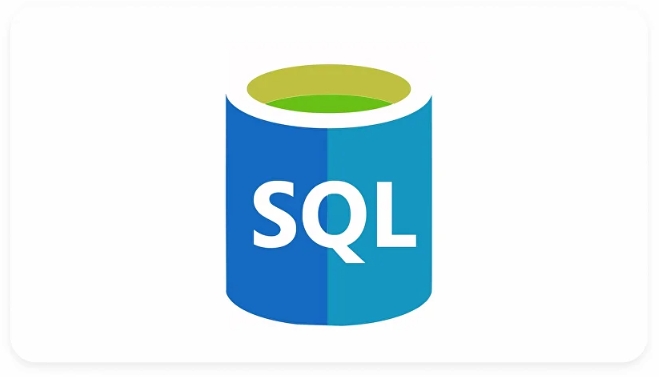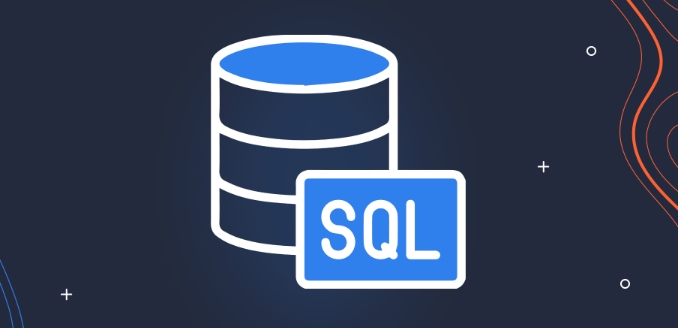The choice of SQL query optimization tool depends on the usage scenario. 1. Open source tools such as DBeaver and MySQL Workbench are suitable for small and medium-sized projects. The former supports multi-database and interface-friendly, while the latter is specially designed for MySQL and has built-in visual analysis functions, but the two lack automation suggestions. 2. Commercial tools such as SolarWinds DPA and Datadog are suitable for enterprise environments. The former provides real-time monitoring and automatic indexing suggestions, while the latter supports full-stack monitoring and can locate system-level problems, but are at a high price. 3. Integrated solutions such as JetBrains DataGrip plug-in and Azure Data Studio are suitable for use in the development stage. They can write and check and improve efficiency, but they are not as comprehensive as professional tools in in-depth analysis. Choosing the right tool according to your needs can effectively improve SQL optimization efficiency.

SQL query optimization tools can help you find performance bottlenecks faster and reduce debugging time. If you are worried about the slow response of the database and the high resource usage, it is particularly important to choose the right tool.

1. Open source tools: DBeaver and MySQL Workbench
These two tools perform well in lightweight scenarios and are suitable for small and medium-sized projects or individual developers.
- DBeaver supports a variety of database types, has a friendly interface, and comes with execution plan analysis function, so you can directly see the time-consuming nodes of the query.
- MySQL Workbench is designed specifically for MySQL, with built-in Query Profiler and Explain Plan visualization, suitable for daily maintenance and simple tuning.
Their advantages are free and easy to use, but their disadvantages are also obvious: there is a lack of automation advice, and you need to judge where to optimize it yourself.

2. Business tools: SolarWinds Database Performance Analyzer and Datadog
If you are working in an enterprise environment or facing complex systems, this type of tool is more suitable for you.
- SolarWinds DPA can monitor SQL execution in real time, and can also compare performance differences across databases, automatically give index suggestions and wait for event analysis.
- Datadog prefers full-stack monitoring. It not only looks at the execution time of SQL statements, but also analyzes them in combination with server resources to help locate whether it is a database or system level problem.
This type of tool is generally charged by node or instance, and the price is not low, but it saves a lot of manual inspection time and is especially suitable for operation and maintenance teams or DBAs.

3. Integrated solution: JetBrains DataGrip plug-in or Azure Data Studio
Sometimes you may prefer to make some optimizations during the development process, and plug-ins integrated into the IDE will be very useful.
- DataGrip itself does not provide deep optimization functions, but can implement basic syntax checking and execution path analysis with plug-ins (such as SQL Optimizer).
- Azure Data Studio is a modern tool launched by Microsoft that supports expansion. Some plug-ins developed by the community can already provide similar functions such as index suggestions and query comparison.
The advantage of this combination is that it does not need to switch environments and write and check it while writing. It is suitable for developers' daily use, but it is not as comprehensive as professional tools in terms of in-depth analysis.
In general, which tool to choose depends on your usage scenario: open source is enough for small projects, business products are considered in enterprise-level requirements, and integrated tools can be used to assist in optimization during the development stage. Basically all that is it. After choosing the right tool, SQL optimization can be much easier.
The above is the detailed content of SQL Query Optimization Tools Comparison. For more information, please follow other related articles on the PHP Chinese website!

Hot AI Tools

Undress AI Tool
Undress images for free

Undresser.AI Undress
AI-powered app for creating realistic nude photos

AI Clothes Remover
Online AI tool for removing clothes from photos.

Clothoff.io
AI clothes remover

Video Face Swap
Swap faces in any video effortlessly with our completely free AI face swap tool!

Hot Article

Hot Tools

Notepad++7.3.1
Easy-to-use and free code editor

SublimeText3 Chinese version
Chinese version, very easy to use

Zend Studio 13.0.1
Powerful PHP integrated development environment

Dreamweaver CS6
Visual web development tools

SublimeText3 Mac version
God-level code editing software (SublimeText3)

Hot Topics
 How to use IF/ELSE logic in a SQL SELECT statement?
Jul 02, 2025 am 01:25 AM
How to use IF/ELSE logic in a SQL SELECT statement?
Jul 02, 2025 am 01:25 AM
IF/ELSE logic is mainly implemented in SQL's SELECT statements. 1. The CASEWHEN structure can return different values ??according to the conditions, such as marking Low/Medium/High according to the salary interval; 2. MySQL provides the IF() function for simple choice of two to judge, such as whether the mark meets the bonus qualification; 3. CASE can combine Boolean expressions to process multiple condition combinations, such as judging the "high-salary and young" employee category; overall, CASE is more flexible and suitable for complex logic, while IF is suitable for simplified writing.
 How to create a temporary table in SQL?
Jul 02, 2025 am 01:21 AM
How to create a temporary table in SQL?
Jul 02, 2025 am 01:21 AM
Create temporary tables in SQL for storing intermediate result sets. The basic method is to use the CREATETEMPORARYTABLE statement. There are differences in details in different database systems; 1. Basic syntax: Most databases use CREATETEMPORARYTABLEtemp_table (field definition), while SQLServer uses # to represent temporary tables; 2. Generate temporary tables from existing data: structures and data can be copied directly through CREATETEMPORARYTABLEAS or SELECTINTO; 3. Notes include the scope of action is limited to the current session, rename processing mechanism, performance overhead and behavior differences in transactions. At the same time, indexes can be added to temporary tables to optimize
 How to get the current date and time in SQL?
Jul 02, 2025 am 01:16 AM
How to get the current date and time in SQL?
Jul 02, 2025 am 01:16 AM
The method of obtaining the current date and time in SQL varies from database system. The common methods are as follows: 1. MySQL and MariaDB use NOW() or CURRENT_TIMESTAMP, which can be used to query, insert and set default values; 2. PostgreSQL uses NOW(), which can also use CURRENT_TIMESTAMP or type conversion to remove time zones; 3. SQLServer uses GETDATE() or SYSDATETIME(), which supports insert and default value settings; 4. Oracle uses SYSDATE or SYSTIMESTAMP, and pay attention to date format conversion. Mastering these functions allows you to flexibly process time correlations in different databases
 Defining Database Schemas with SQL CREATE TABLE Statements
Jul 05, 2025 am 01:55 AM
Defining Database Schemas with SQL CREATE TABLE Statements
Jul 05, 2025 am 01:55 AM
In database design, use the CREATETABLE statement to define table structures and constraints to ensure data integrity. 1. Each table needs to specify the field, data type and primary key, such as user_idINTPRIMARYKEY; 2. Add NOTNULL, UNIQUE, DEFAULT and other constraints to improve data consistency, such as emailVARCHAR(255)NOTNULLUNIQUE; 3. Use FOREIGNKEY to establish the relationship between tables, such as orders table references the primary key of the users table through user_id.
 What is the purpose of the DISTINCT keyword in a SQL query?
Jul 02, 2025 am 01:25 AM
What is the purpose of the DISTINCT keyword in a SQL query?
Jul 02, 2025 am 01:25 AM
The DISTINCT keyword is used in SQL to remove duplicate rows in query results. Its core function is to ensure that each row of data returned is unique and is suitable for obtaining a list of unique values ??for a single column or multiple columns, such as department, status or name. When using it, please note that DISTINCT acts on the entire row rather than a single column, and when used in combination with multiple columns, it returns a unique combination of all columns. The basic syntax is SELECTDISTINCTcolumn_nameFROMtable_name, which can be applied to single column or multiple column queries. Pay attention to its performance impact when using it, especially on large data sets that require sorting or hashing operations. Common misunderstandings include the mistaken belief that DISTINCT is only used for single columns and abused in scenarios where there is no need to deduplicate D
 What is a sequence object in SQL and how is it used?
Jul 02, 2025 am 01:21 AM
What is a sequence object in SQL and how is it used?
Jul 02, 2025 am 01:21 AM
AsequenceobjectinSQLgeneratesasequenceofnumericvaluesbasedonspecifiedrules,commonlyusedforuniquenumbergenerationacrosssessionsandtables.1.Itallowsdefiningintegersthatincrementordecrementbyasetamount.2.Unlikeidentitycolumns,sequencesarestandaloneandus
 What is the difference between WHERE and HAVING clauses in SQL?
Jul 03, 2025 am 01:58 AM
What is the difference between WHERE and HAVING clauses in SQL?
Jul 03, 2025 am 01:58 AM
The main difference between WHERE and HAVING is the filtering timing: 1. WHERE filters rows before grouping, acting on the original data, and cannot use the aggregate function; 2. HAVING filters the results after grouping, and acting on the aggregated data, and can use the aggregate function. For example, when using WHERE to screen high-paying employees in the query, then group statistics, and then use HAVING to screen departments with an average salary of more than 60,000, the order of the two cannot be changed. WHERE always executes first to ensure that only rows that meet the conditions participate in the grouping, and HAVING further filters the final output based on the grouping results.
 Key Differences Between SQL Functions and Stored Procedures.
Jul 05, 2025 am 01:38 AM
Key Differences Between SQL Functions and Stored Procedures.
Jul 05, 2025 am 01:38 AM
SQLfunctionsandstoredproceduresdifferinpurpose,returnbehavior,callingcontext,andsecurity.1.Functionsreturnasinglevalueortableandareusedforcomputationswithinqueries,whileproceduresperformcomplexoperationsanddatamodifications.2.Functionsmustreturnavalu






